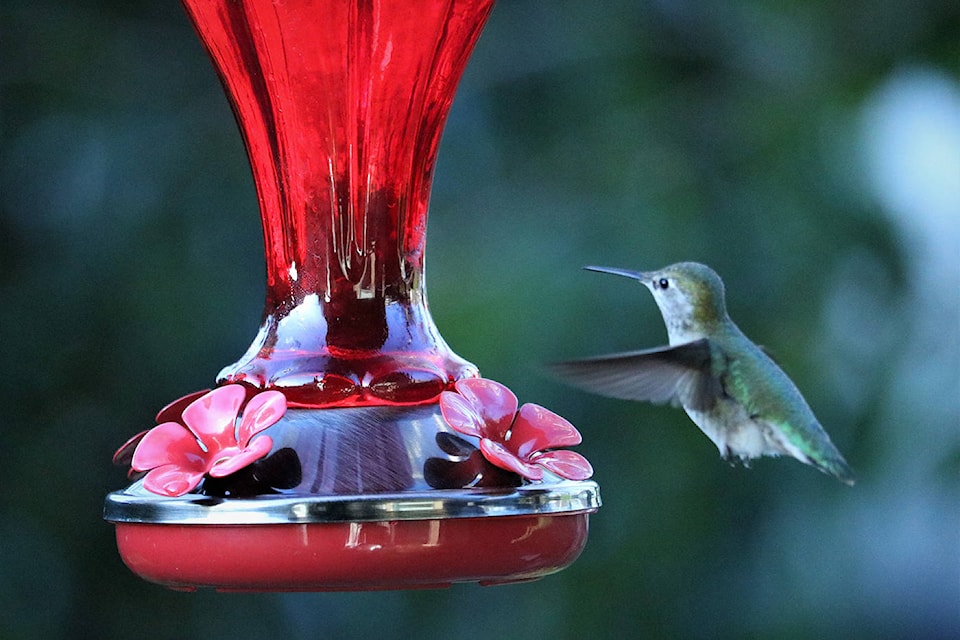Rick Stiebel/Columnist
Gram for tiny, iridescent gram, hummingbirds have to be some of the toughest little critters in Mother Nature’s menagerie of magical miniscules.
Any creature small enough to fit in the palm of a child’s hand that weighs less than a penny and can handle a 20-hour non-stop flight of 800 kilometres across the Gulf of Mexico deserves the loftiest perch atop the animal wingdom.
My fascination began the first time I was buzzed by one when I was six or seven during a family vacation in Quebecois country de cottage.
I was absorbed in a comic book when one flickered by my ear to grab a meal at a potted plant less than a foot from where I sat, startled but transfixed.
The sound of those little wings whirring away between bobs and sips was impressive, but the blink and you’ll miss it departure in reverse – the only feathered friend on the planet capable of that manoeuvre – was frankly unforgettable.
We’re fortunate on Vancouver Island to share flight paths with a variety of the 338 tribes of hummingbirds that grace the planet, many of which share our space all year long.
The feeder by our kitchen window and another on the back deck afford views of them engaging in aerial warfare over seating arrangements usually reserved for nature documentaries. It’s nothing short of mind bobbling to watch them perch and feed in winds and storms fierce enough to blow the hat off your head.
READ MORE: Rickter Scale
The bride has taken to affixing names based on their personalities; meet Sippy, Big Gulp, Flitty and Gazy, who likes to relax and take in the scenery between drinks.
Although I’m guilty of beaking off occasionally about the soaring cost of sugar, we always ensure both feeders are cleaned regularly and only use the finest vintage of water, filtered then boiled.
Dissolving the one part sugar to the four parts equal amounts of water with a surgically sterilized whisk is optional, but a nice touch they appreciate nonetheless.
I’ve been known to grumble out of wing shot when they tear through both feeders in a couple of days, but won’t go to bed without checking to make sure there’s enough nectar to get our feathered family through the morning rush hour.
Joan takes things a step further, of course, insisting we bring the feeders in whenever the temperatures threaten to plummet below freezing.
Fortunately, that happens only occasionally during the darkest days of winter, or she would set her alarm to ensure breakfast was ready when they wing their way to our hanging diners.
It’s the most important meal of the day when you’re feeding a family of thirsty youngsters. Right up there with recess, lunch, happy hour and dinner.
We top up the feeders after dark to spare the neighbours from witnessing the array of manic dances I break out at the sight of a wasp or bumble bee.
I still haven’t mastered staying perfectly still when a hummer approaches unannounced, but as the bride points out, like most things with me, it’s a work in progress.
Rick Stiebel is a semi-retired local journalist.



